A large wildfire swept through the Grasslands National Park at the end of April this year. The fire started in agricultural fields outside of the park and was carried into the park by a strong wind gusting up to 80 kilometres per hour. A large area of the park was affected – the fire travelled approximately 20 kilometres along the Frenchman River Valley and burned an area between one to four kilometres wide. About 200 people fought to contain the flames and by the next afternoon the fire was extinguished and under control. See an article about the wildfire published on CBC News.
I happened to be in the area that weekend, photographing Sage Grouse in northern Montana. On the way back to Saskatoon, we stopped in the Park to check out the aftermath and assess the effect of this massive wildfire. Due to the approaching storm and a long drive still ahead of us, we did not have an opportunity to stay in the Park for too long. From what we saw and information gathered from the news, there wasn’t too much damage to the Park infrastructure. We saw a few burned signs and a damaged fence. The bison fence also received some damage but the Park staff worked diligently to repair it and prevent the park bison herd from leaving the Park perimeter. There was damage to old ranch buildings at the Larson’s homestead and haystacks at a neighbouring ranch. The new campground facilities at Belza were not affected. North edge of the blaze stretched along the gravel road leading to the Two Trees Trail and down into the Frenchman River valley. Photographs you see here were taken a day after the blaze swept through the area.
Although this wildfire was massive in its extent and local residents can not remember seeing such a big fire in the last 20 or 50 years, a prairie wildfire is a natural and integral part of the prairie ecosystem. Just a week or two before this wildfire, the Park staff conducted a controlled, prescribed burn near Two Trees Trail to reduce the buildup of dead organic material and to control the spread of invasive crested wheat grass. Actually, the area covered by the prescribed burn served as a fire guard in this fire. Read about the prescribed fire regime in Grasslands NP.
Prairie around the Two Trees Trail was heavily infested with the invasive crested wheat grass and the valley below, along the Frenchman River was just covered with invasive, non-native smooth brome grass. The wildfire removed almost all of the above-ground grass cover and might help in controlling the invasive grass species. The success in re-establishing native plants in this area will depend on the success of removing the emerging crested wheat and smooth brome by grazing, and in preventing the formation of seed heads in problem species.
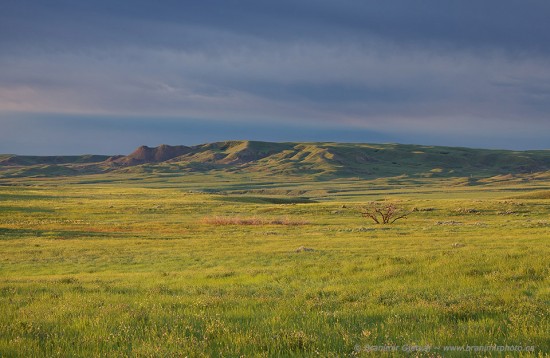
View south towards Two Sisters Butte. A large portion of the prairie here was covered with invasive crested wheat grass (July 2010).
The prairie ecosystem is built to withstand and recover from fires, even severe fires like the one that swept through the Grasslands Park this year. Several news reports stated that the wildfire “damaged the land”. The land can not be damaged by a fire – the land, or to be more accurate the prairie ecosystem, is shaped and modified by fires as it has been for thousands of years. This wildfire is nothing that the prairie has not seen before. Over the next few years we will see fewer shrubs and trees and more grasses, sedges and wildflowers. Trees along the Frenchman River have been badly burned and will probably not recover; it will be some time until we see re-establishment of trees along the river.
Although the massive extent of this fire means that some species will have to re-colonize the burned area from relatively long distances, the colonization will be assisted by the presence of a wide zone of native prairie surrounding the charred land. The speed of recovery will depend on the amount of moisture available to the plants. As we were leaving the Park, a heavy downpour soaked the soil. The rain later turned to light snow that briefly remained on the surface. I talked to local residents a few days ago and they told me that a fresh green grass is starting to emerge through the black crust. This might be a good year to visit the Park in anticipation of a marvelous wildflower show.
Update on 17. May 2013: we now know more details about the April wildfire – approximately 5,56 hectares (over 12,200 acres) burned, mostly along the Frenchman River Valley. The fire was first reported on Saturday, April 27 west of the highway number 4. It crossed the highway near the Two Trees Trail and rapidly spread into the Park. Over 250 volunteers and firefighters from surrounding communities, crews from the Province of Saskatchewan and Parks Canada staff from Grasslands, Prince Albert, Waterton, Jasper, Lake Louise, Kootenay and Batoche parks fought to control the blaze. The advancement of fire front was slowed down by 3 – 4 am on Sunday, April 28. Although no new advancement of the fire front had been recorded by late afternoon of the same day, there we still occasional flare-ups and hot-spots discovered over the next few days.
Trail markers and trail heads have not been replaced in burned areas. Parks Canada is asking visitors to be cautious when hiking in the affected area and make sure that you have a method for keeping you position bearings i.e. use maps, compass or GPS. Visitors are advised to stay vigilant and to report anything unusual to park staff. It is also wise to check on the website or the office for closures or changing conditions before arrival. There are wind effects across the high tops of burn areas whereby soot is picked up in ‘dust devils’ or plumes and can resemble fire smoke. Please be sure you are not calling in these soot disturbances into the emergency 911.

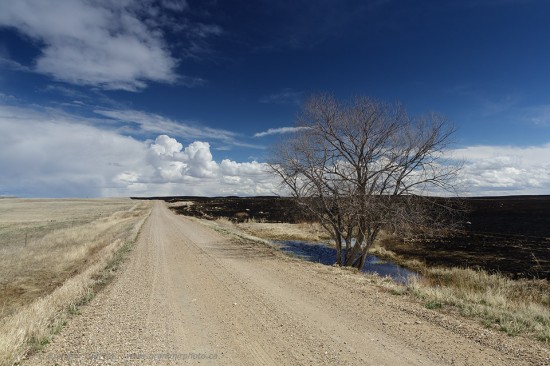

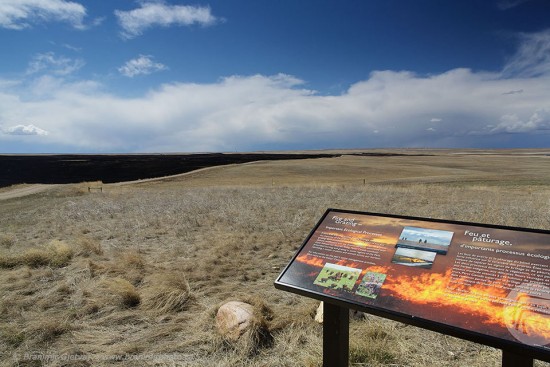
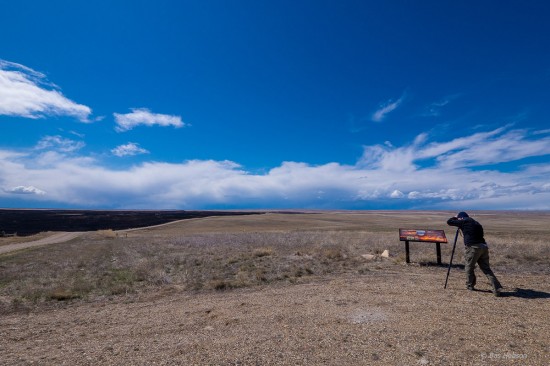

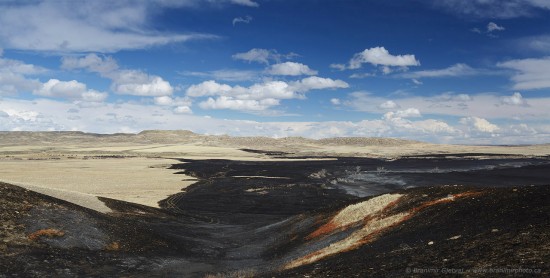

I did not appreciate the full extent of the area that the fire burned. Nature will, of course, recover from this event.
With the May long weekend fast approaching, I would hope that visitors to the park will be careful with their cigarettes etc.